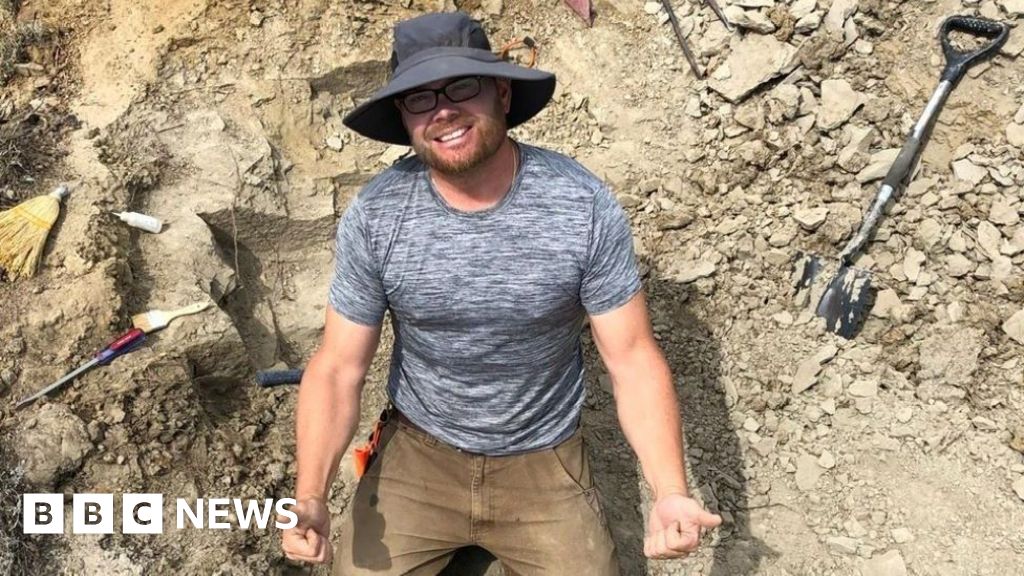It’s been 2 and a half weeks since the once-in-a-generation display of the aurora, or northern and southern lights, visited both the northern and southern hemispheres. Twinkling lights danced as far south as Jamaica, Mexico, India, South Africa and Australia.
The sunspot that brought the northern lights is returning. Here’s what you need to know.
The extreme solar storm arose from an impressive area of sunspots, or bruise-like discolorations on the sun that pulsate and pulsate with energy. And, after more than two weeks hidden on the backside of the sun, that same colossal group of sunspots will once again point toward Earth.
Although the sunspot cluster is not as large as it once was, it is still blazing and throwing magnetic energy into space. Some of them are expected to hit Earth as early as Friday night, and there could be more geomagnetic storms – and potential aurora appearances.
The Sun is entering its most active period in two decades, triggering increasingly intense eruptions from its surface. Even if this aurora show doesn’t work out, scientists say there will likely be more viewing opportunities over the next year or two.
A massive group of sunspots
In early May, a particularly large and complex group of sunspots called Active Region 3664 appeared on the solar disk. It caused a barrage of X-class solar flares — the most intense kind, or explosions of high-energy particles and electrons hurtling through space at the speed of light. Several short-wave radio blackouts have affected high-frequency signals on Earth.
Slower shock waves of magnetism, known as coronal mass ejections (CMEs), rip through space like interstellar tsunamis. Several overlapped, colliding with Earth’s magnetic field on the night of May 10, igniting vivid auroral displays around the world. NASA said it was one of the strongest aurora displays in 500 years.
The sunspot cluster returns
AR3697 It’s not what it used to be, but it still has the potential for a great torch/cmes. The X1 flare and associated Cme occurred yesterday, which NOAA listed as a Friday night shock. pic.twitter.com/Vvq4uyM4Qe
— LaPrèsWX (@Mitch_LaPres) May 30, 2024
Active region 3664 disappeared from view on May 15, rotating behind the sun and facing away from Earth. This prevented us, at least temporarily, from being in the line of fire for any of his eruptive explosions.
The sun takes about 27 days to turn, meaning that after two weeks have passed, the sunspot rotates back into view. As usual, it has been given a new name and number: Active Region 3697.
“It’s no surprise that it survived the rotation around the far side of the Sun,” Shawn Dahl, service coordinator at the National Oceanic and Atmospheric Administration’s Space Weather Prediction Center in Boulder, Colo., said in an email. “The fact that this region … has come back into view and is still producing [significant radio blackout] the activity is quite unusual.”
There was also a dramatic explosion on the backside of the sun on May 20, and space weather forecasters believe active region 3664 (now 3697) was the culprit.
We had another X-Flare yesterday around 10:37AM ET. The old sunspot has reopened on the side of the sun facing Earth. It produced an X 1.4 flare that lasted more than an hour, after which a CME (Coronal Mass Ejection) was formed. There seems to be great potential for pic.twitter.com/nUoWLRU8Ck
— ✨Maria Deesy✨ (@DeesyMaria) May 30, 2024
Forecasters at the Space Weather Center are already preparing for new geomagnetic storms. The X-class solar flare preceded a CME launched from the southwest (lower left) edge of the solar disk on Wednesday. The CME is believed to hit Earth sideways, causing minor to moderate geomagnetic storms on May 31.
Any storm should reach G2 levels on a scale of 1 to 5, according to NOAA, which would make the aurora visible in southern Canada and possibly the far northern United States.
The previous flare actually lasted an incredibly long time – more than an hour – and caused a prolonged shortwave radio blackout over America.
No one can definitively say what will happen in the next 10 days. The sunspot region will be most pointed toward Earth for the next three to nine days, providing a nearly week-long window during which CMEs could be “geoeffective,” or ready to impact Earth.
Whether the sunspot region will cough, sputter, or erupt—and give us another high-class geomagnetic storm—remains to be seen.
Kasha Patel contributed to this report.

